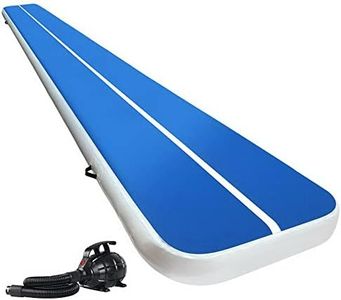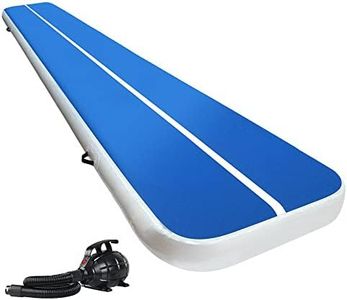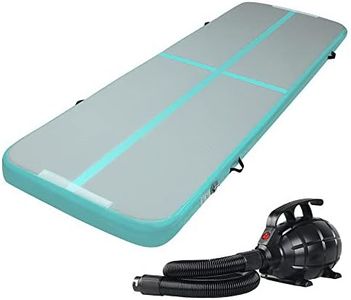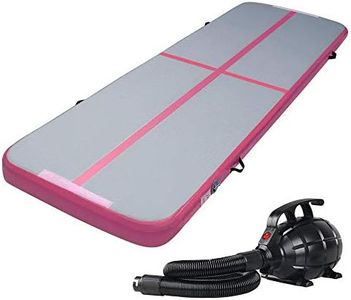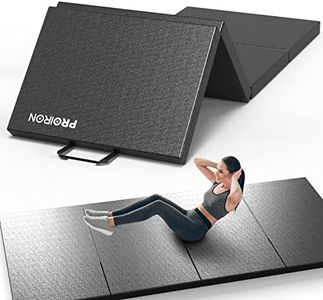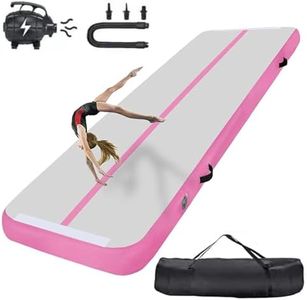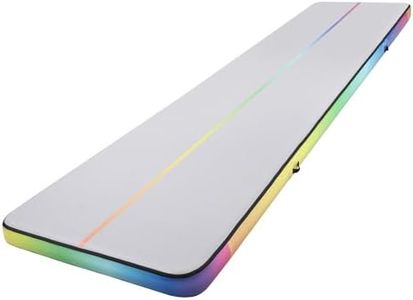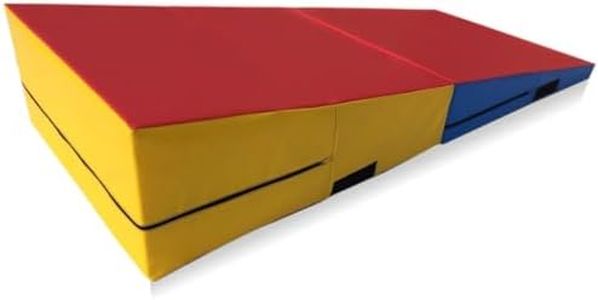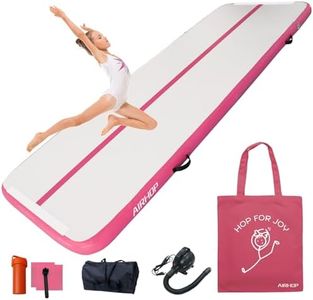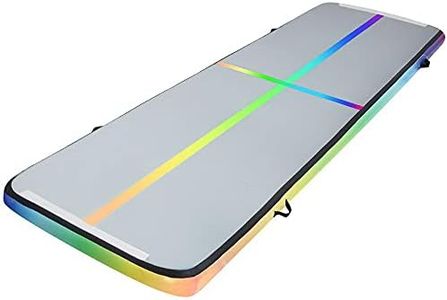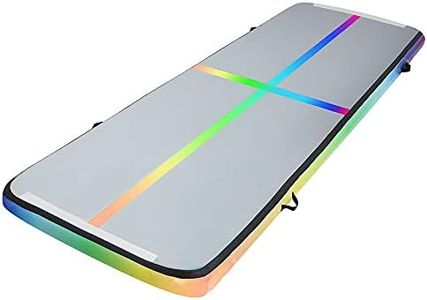We Use CookiesWe use cookies to enhance the security, performance,
functionality and for analytical and promotional activities. By continuing to browse this site you
are agreeing to our privacy policy
10 Best Tumbling Mats
From leading brands and best sellers available on the web.Buying Guide for the Best Tumbling Mats
Choosing the right tumbling mat is essential for safety, comfort, and effectiveness whether you are practicing gymnastics, cheerleading, martial arts, or just need a soft surface for play or exercise. The main things to consider are where and how you'll be using the mat, how much space you have, and what kind of activities you'll be doing on it. The right balance of size, thickness, material, and portability ensures you practice safely and comfortably.ThicknessThickness refers to how 'tall' the mat is from the floor up and directly affects how much shock it can absorb if you fall or tumble on it. Thicker mats (often 2 inches or more) provide more cushioning and are best for higher impact activities like gymnastics or cheerleading, while thinner mats (around 1 inch or less) might be sufficient for stretching, yoga, or light floor exercises. If you anticipate higher jumps or flips, go for a thicker mat for better protection. Consider the user's age and activity level; children and beginners often benefit from more cushioning to protect joints and bones.
MaterialThe material of a tumbling mat generally refers to both the fabric covering and the inner foam. The cover is usually vinyl or PVC, which is both durable and easy to clean. Inside, you'll usually find either polyethylene or polyurethane foam. Polyethylene is firmer and provides better support, making it ideal for gymnastics and cheer, while polyurethane is softer and more suitable for low-impact activities. Those seeking maximum protection for intense activity should look for high-density foam, while casual users might prefer a softer mat for comfort.
Size (Length and Width)The size of the mat determines how much space you have to move around. Mats can range from small (about 4 feet by 2 feet) to large (up to 10 feet or more in length and 4 feet wide). Larger mats are better for full-length tumbling passes, while smaller mats work well for individual exercises, stretching, or small play spaces. Consider the activities you'll be doing and the space available in your room or gym to decide how large your mat should be. For group activities or more dynamic movements, err on the side of a bigger mat.
Portability and StoragePortability means how easy it is to move or store the mat when not in use. Some mats fold up into sections, while others roll up or even inflate. Folding mats are convenient because you can easily tuck them away, and they often have carrying handles. Inflatable mats are very portable but require a pump to set up. If you'll need to move the mat often or have limited storage space, choose one that's lightweight, easy to fold, or inflate/deflate quickly.
Surface Texture and GripThis spec refers to how smooth or grippy the top surface of the mat is. A slick surface can cause slips, especially during jumps and tumbling, while a textured surface offers better traction. If your activities involve fast movement, barefoot landings, or quick changes of direction, you'll want a non-slip surface to stay safe. For those mainly sitting, stretching, or practicing gentle activities, surface grip is less critical.
DurabilityDurability covers how well the mat will hold up over time with regular use. It depends on the thickness of the cover, the quality of the stitching, and the density of the inner foam. If you plan to use the mat frequently or for intense activity, look for reinforced seams and heavy-duty materials. Less frequent use or gentle activities may not require extra-tough construction, but better durability generally means better value in the long run.
